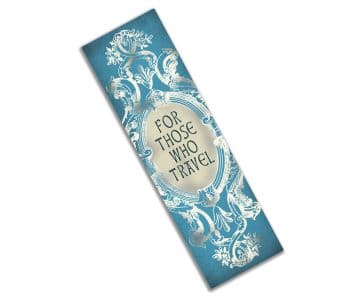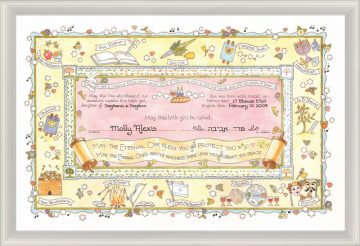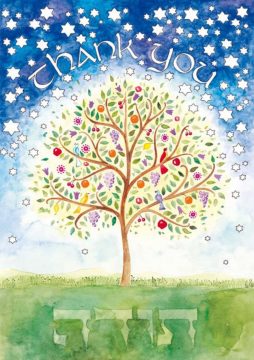Shalom!
We have created the following info for rabbis and other clergy to help in the personalization process. Mickie has been creating Ketubot full time for more than 3 decades. Over the years, we estimate that she has personalized over 40,000 Ketubot. We have worked with many rabbis. Some rabbis like to have the Ketubah filled in one way, some like it filled in slightly differently. Based on our experience, here is how the vast majority of rabbis prefer the Orthodox Ketubah to be filled in. If you would like it filled in differently, you can download the image of our Orthodox Text or Conservative Text and fill it in exactly as you prefer and submit that along with the personalization form.
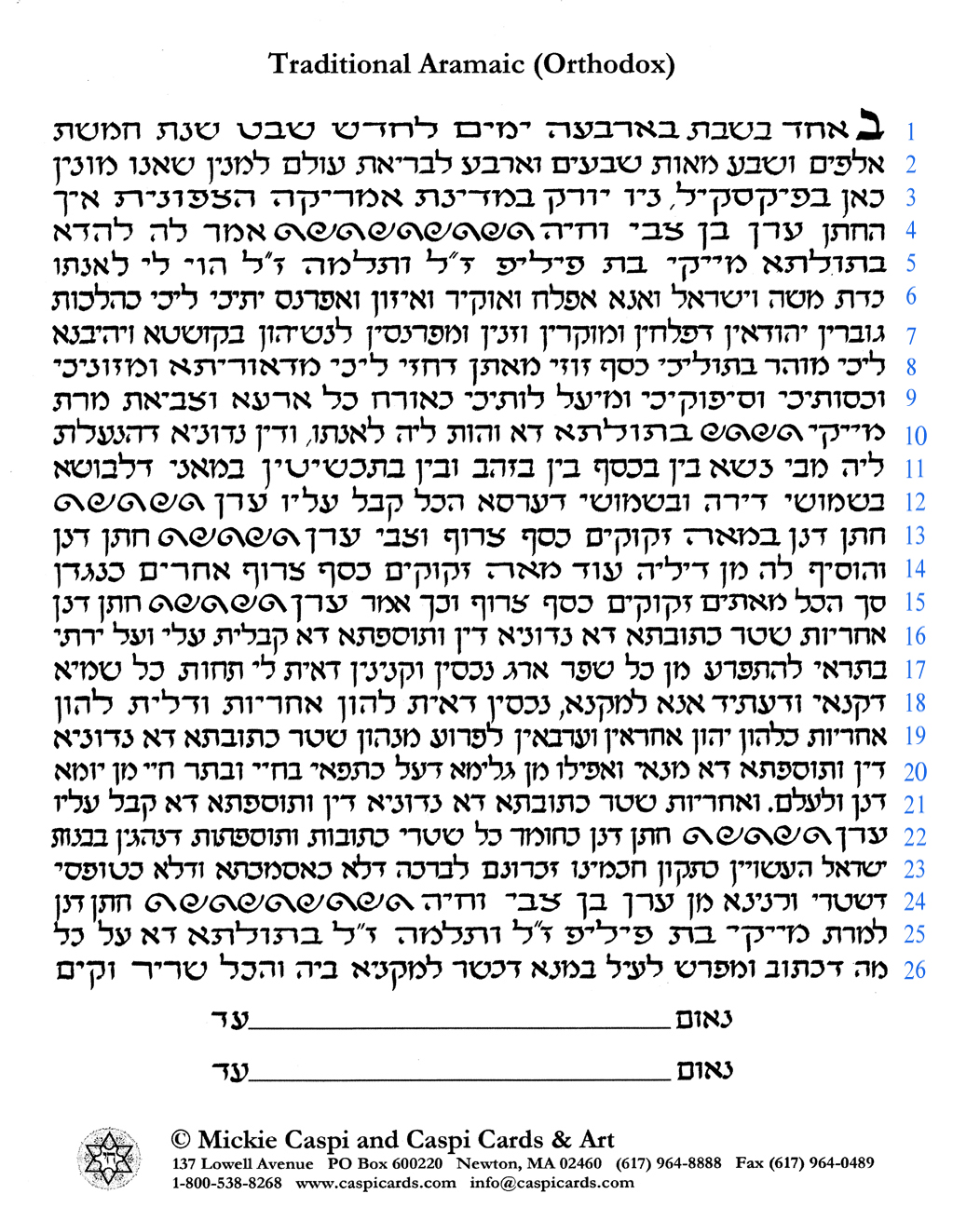

Lines 1-3 (Date and Location Information):
- באחד is either at the beginning of the first line -or- centered on its own above the rest of the text – of course, if the wedding is on a different day of the week (such as Tuesday), we would write the appropriate Hebrew number (בשלישי), etc.
- We always put ב before the date.
- We write ביום אחד לחדש on the first day of the month, ימים for days 2-9, and יום from day 10 until the end of the month.
- If the wedding is on the 30th day of the Hebrew month, we add the appropriate Hebrew for Rosh Hodesh. If there is room, we write out שהוא ראש חדש in full, if not, we use the abbreviation (ר״ח).
- For the month of Heshvan, we write חשון. If you want מרחשון please specify.
- After Tisha B’Av, we write the month as מנחם אב.
- We write the year as שבעים וארבע. If you would like to have a ‘vav’ to make it ושבעים וארבע, please specify.
- For the location of the ceremony, we use our best judgement for Hebrew spellings. If you would like to use a specific spelling, please let us know. We add a ב at the beginning of the city. We also add במדינת אמריקה הצפונית after the city and state. Again, if you would like a different format, please specify. For Washington, DC, we write וושינגטן הבירה.
- We always put ב before the date.

Lines 4-5 (Names of the Bride and Groom)
- If it is the Bride’s first marriage, we use בתולתא. If she is divorced, we use מתרכתא. If she is a widow, we use ארמלתא. And if she has converted, we use גיורתא.
- When we write the names of the Bride and Groom, we include both the father’s and the mother’s Hebrew names.
- We do not include the last names.
- We add הכהן or הלוי after the father’s name, if appropriate.
- If someone is deceased, we add ז״ל after the name.
- Since all of our Ketubot are offset lithographs, we do not use inkjet printers for personalization. Mickie fills in each ketubah by hand. Sometimes, a name might be too short or too long to fit in the space. When the name is too short, Mickie adds decorative curlicues to fill in the space. If a name is too long, we will call to discuss the options.
- When we write the names of the Bride and Groom, we include both the father’s and the mother’s Hebrew names.

Line 8 (Dowry)
We have seen many variations on these formulas. These are the most universally accepted, and unless otherwise specified, what we will use:
- If it is the Bride’s first marriage, we use ליכי מוהר בתוליכי כסף זוזי מאתן דחזי ליכי מדאוריתא.
- If she is divorced, we use ליכי כסף מתרכותיכי זוזי מאה דחזי ליכי מדרבנן.
- If she is a widow, we use ליכי כסף ארמלותיכי זוזי מאה דחזי ליכי מדרבנן.
- And if she has converted, we use ליכי כסף גיורותיכי זוזי מאה דחזי ליכי מדרבנן.
- If she is divorced, we use ליכי כסף מתרכותיכי זוזי מאה דחזי ליכי מדרבנן.
Line 10 (Bride’s Name)
- Only the bride’s name is listed, not her parents, followed by her status.
Line 11 (From Whose House)
- If it is the bride’s first marriage AND her father is living, we write מבי אבוה.
- If the bride has converted, we write מביתה.
- For all others, we write, מבי נשא.
- If the bride has converted, we write מביתה.
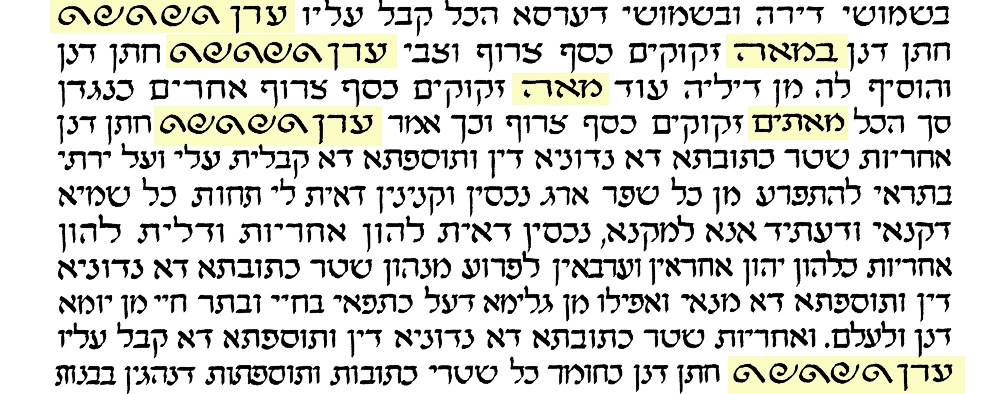
Lines 12, 13, 15 & 22 (Groom’s Name)
- Only the groom’s name is listed, not his parents, in these 4 locations.
Lines 13-15 (Monetary Amounts)
- If it is the Bride’s first marriage, we use במאה – מאה – מאתים.
- If she is divorced, converted or a widow, we use בחמשין – חמשין – מאה.
- If she is divorced, converted or a widow, we use בחמשין – חמשין – מאה.

Lines 24-25 (VeKanina, Names)
- On all of our Ketubot, the regel of the ק is left off for you to complete at the wedding.
- The final time the Bride’s and the Groom’s names appear, we again include both parent’s names.
- The bride’s status, appears after the bride’s name.
- The final time the Bride’s and the Groom’s names appear, we again include both parent’s names.

Signature Lines
- On all of our Orthodox Aramaic only Ketubot (No English text), the signature lines are stacked one on top of the other and centered. Some ketubot have the lines extending to be in line with the text above, but most do not.
- Most of the Orthodox Aramaic with English and Conservative with English have the lines of the witnesses side by side.
- Most of the Orthodox Aramaic with English and Conservative with English have the lines of the witnesses side by side.
For Conservative texts, we fill out the information the same way as we do for an Orthodox text. The only difference is that the Bride’s and the Groom’s full names (including both parents) appear an additional 2 times at the bottom of the Ketubah. If you would like it filled in differently, you can download the image of our Conservative Text and fill it in exactly as you prefer and submit that along with the personalization form.
